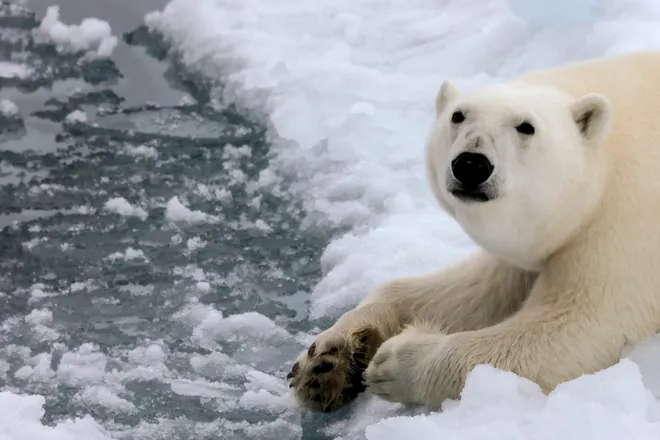Do polar bears hibernate? The arctic mammal's sleep behavior, explained.
You might remember in science class learning about hibernation – a time when certain animals "sleep" for long periods during the winter. In reality, hibernation is much more complex than that.
Hibernation is a period of dormancy that some animals undergo to conserve energy in order to survive adverse weather or lack of food, according to the Australian Academy of Science. From chipmunks to woodchucks, hundreds of animals hibernate.
Are polar bears on that list? They don't take a long winter's nap the way you may think.
Do polar bears hibernate?
Polar bears are not "true hibernators," Polar Bears International (a conservation nonprofit) reports.
When an animal hibernates, its body temperature falls, its heart rate slows and its breath is more shallow, according to the World Animal Protection. As a result, the animal is "barely conscious and moves very little."
Some bears do undergo a period of dormancy during winter, but they are not asleep the entire time. During their "hibernation," bears do not eat or drink as often, and they will rarely (if at all) defecate or urinate, according to the Alaska Department of Fish and Game.
Since polar bears do not enter "deep hibernation," their body temperatures won't fall significantly and certain body functions will continue, SeaWorld reports.
A more correct term is "carnivore lethargy." Still, not all will do this every winter.
Female polar bears, especially pregnant ones, will undergo carnivore lethargy, according to SeaWorld. Male polar bears or those with cubs will often continue activity even during times of low food availability, the Alaska Department of Fish and Game reports.

Move over March Madness:March Napness for rescue bears seeks to crown a sleep champion
What do polar bears eat?
Not only are polar bears carnivores (meaning they mostly eat meat), but they are the most carnivorous member of the bear family. They need lots of seal fat to survive and will consume on average 4.4 pounds of fat per day, the World Wide Fund for Nature reports.
Food is often hard to come by in the Arctic, so polar bears might go several months without eating. Fat reserves help polar bears maintain their health. For example, a seal weighing 121 pounds can provide eight days' worth of energy for a polar bear, according to the WWF.
Polar bears aren't picky eaters. Thanks to their keen sense of smell, they can find and eat carcasses of larger animals, such as whales, walruses and narwhals.
Polar bears will also snack on fish, eggs, kelp, berries, reindeer, rodents and shellfish.
Where do polar bears live?Get to know more on the Arctic habitat of the 'sea bear.'
How much does a polar bear weigh?
On average, a male polar bear will weigh between 600 and 1200 pounds, according to the Alaska Department of Fish and Game. However, some can reach up to 1700 pounds.
A female polar bear is smaller, weighing between 400 and 700 pounds.
Just Curious for more? We've got you covered
USA TODAY is exploring the questions you and others ask every day. From "How many tigers are left in the world?" to "Can cats eat peanut butter?" to "What's the biggest snake?" – we're striving to find answers to the most common questions you ask every day. Head to our Just Curious section to see what else we can answer.
Disclaimer: The copyright of this article belongs to the original author. Reposting this article is solely for the purpose of information dissemination and does not constitute any investment advice. If there is any infringement, please contact us immediately. We will make corrections or deletions as necessary. Thank you.







